Egyptian Countryside

We were on our way to Memphis from Cairo. Memphis is south of Cairo at the head of the Nile Delta, about where Upper Egypt and Lower Egypt meet. It was the capital of Egypt during the Old Kingdom (2686–2181 BC).

Egyptian Countryside
Egyptian Countryside
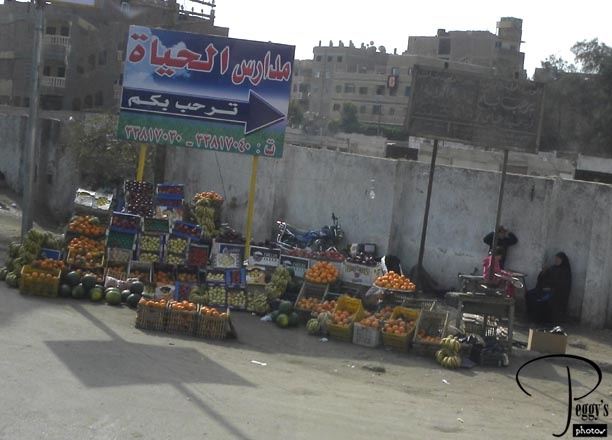
Fruit vendor on the side of the road.

Egyptian Countryside
Egyptian Countryside
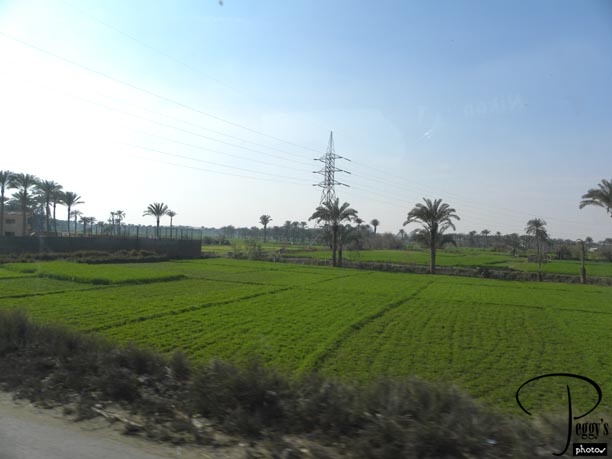
Memphis was a large city of temples and palaces that was pillaged by foreign invaders. Palm groves, fields, and villages now cover the ruins of the city. I believe that we are in ancient Memphis now.

Egyptian Countryside
Egyptian Countryside
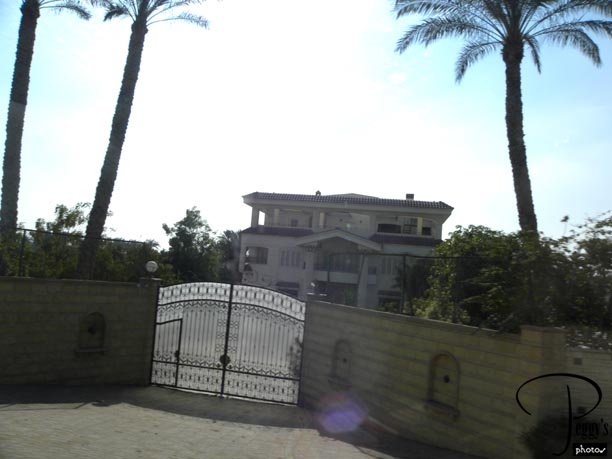
There are many very large homes in this area. I believe their owners also own the farms here (which would make them farmhouses?).

Egyptian Countryside
Egyptian Countryside
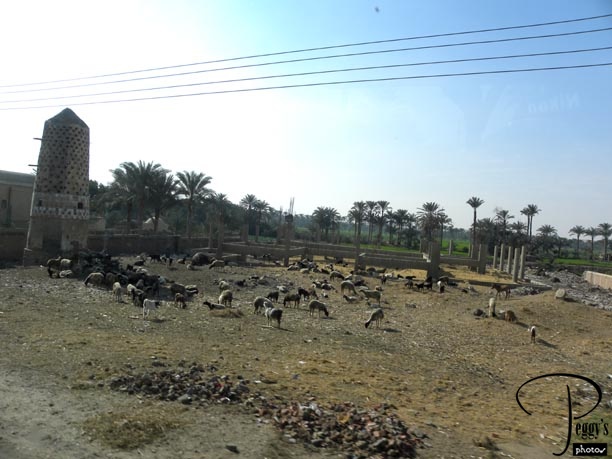
A goat farm. The structure on the left is a pigeon house, for raising pigeons to eat.

Egyptian Countryside
Egyptian Countryside
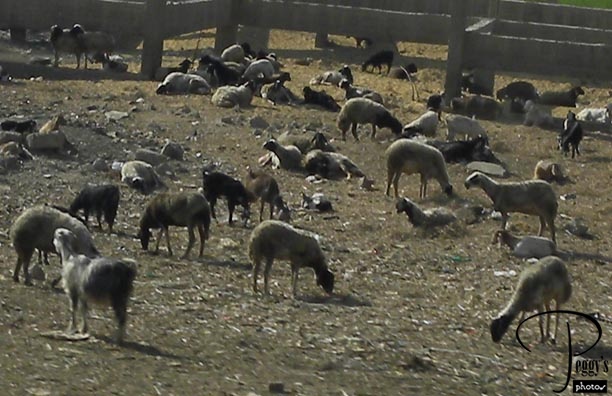
Close–up of the goats. They are finding something to eat here.

Egyptian Countryside
Egyptian Countryside
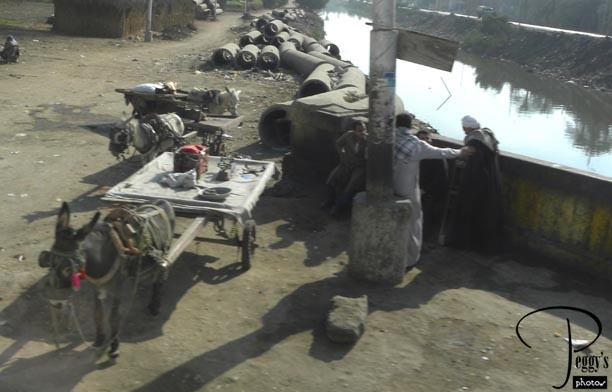
A donkey at work.

Egyptian Countryside
Egyptian Countryside
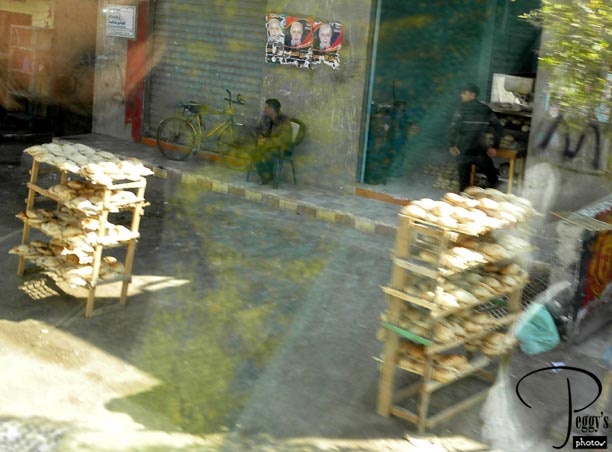
Bread for sale on the sidewalk.

Egyptian Countryside
Egyptian Countryside
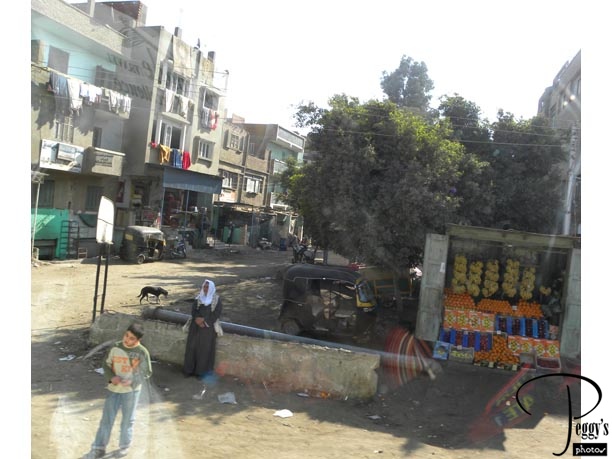
A village.

Egyptian Countryside
Village of Mit Rahina
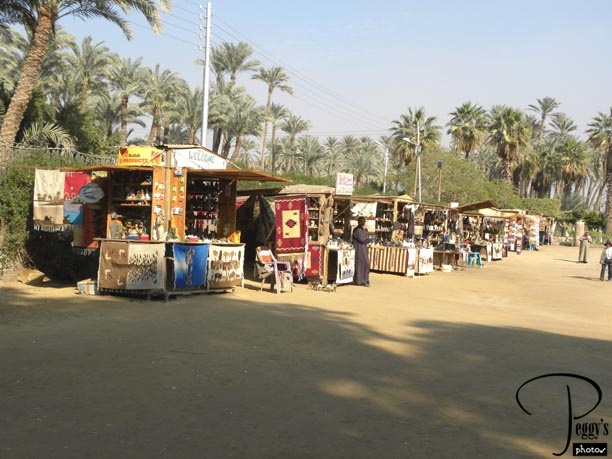
The village of Mit Rahina was our first stop. Vendors waiting for us on the left.

Village of Mit Rahina
Village of Mit Rahina
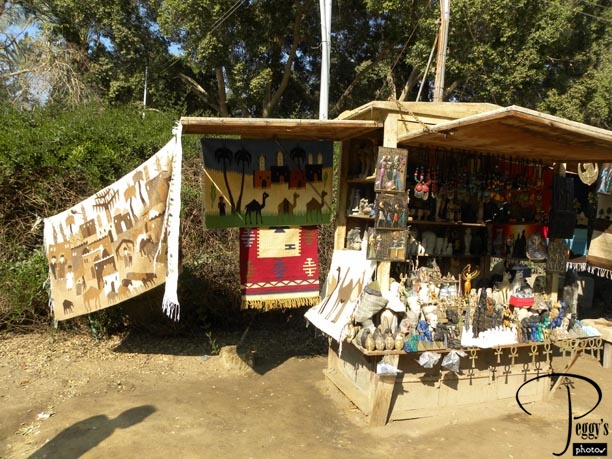
Many small rugs were for sale here, probably made in one of the carpet schools nearby. I bought the one in the middle above the red rug. I priced a similar rug at another vendor and he gave me a price of $100 U.S. I walked away and didn’t even try to bargain with him. I went to the vendor at this stall and I bargained him down to $30 U.S., which I felt was a fair price. The first vendor came rushing over to approve the price––obviously, these vendors are not independent of each other.

Village of Mit Rahina
Village of Mit Rahina
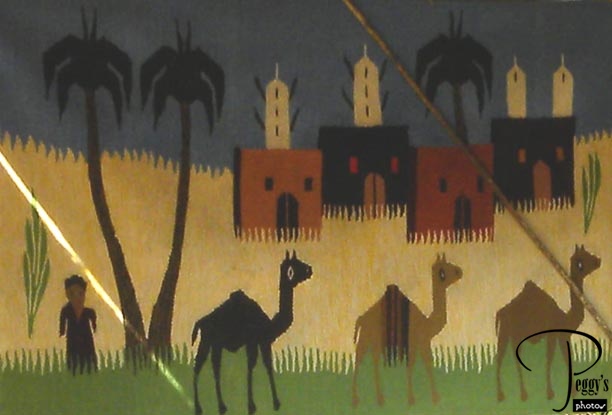
Close–up of my new rug. The actual colors are more vibrant and there is fringe on the left and right. I’ll use it as a wall hanging.

Village of Mit Rahina
The Alabaster Sphinx
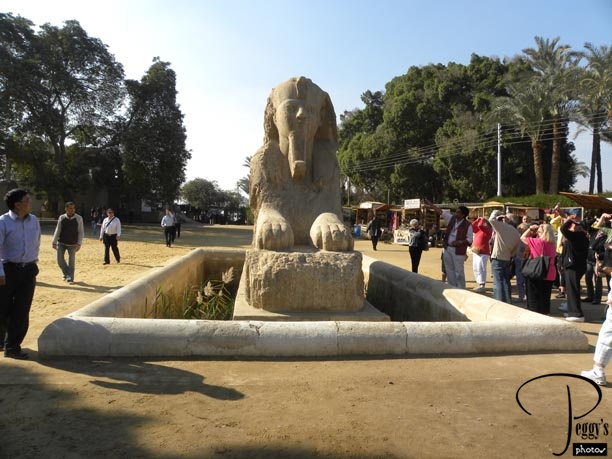
What we came here to see: The Alabaster Sphinx. It is from the 18th Dynasty (1550–1295 BC) and is the largest calcite alabaster statue that so far has been found.

The Alabaster Sphinx
The Alabaster Sphinx
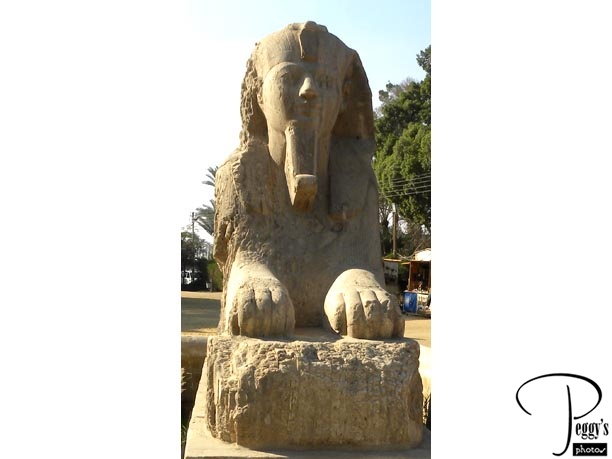
Close–up of the Alabaster Sphinx.

The Alabaster Sphinx
The Alabaster Sphinx
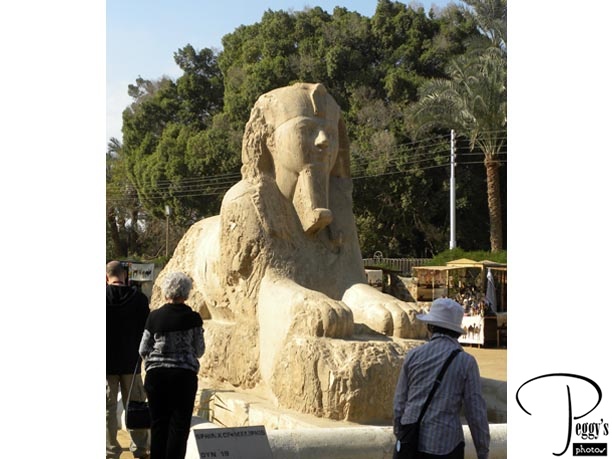
Viewed from the side.

The Alabaster Sphinx
The Alabaster Sphinx and Statue of Ramses II
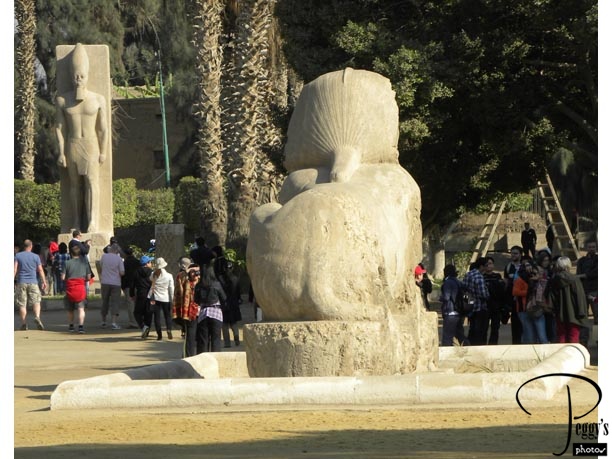
The Alabaster Sphinx looking at a statue of Ramses II (1279–1213).

The Alabaster Sphinx and Statue of Ramses II
Statue of Ramses II

A statue of Ramses II.

Statue of Ramses II
Statue of Ramses II
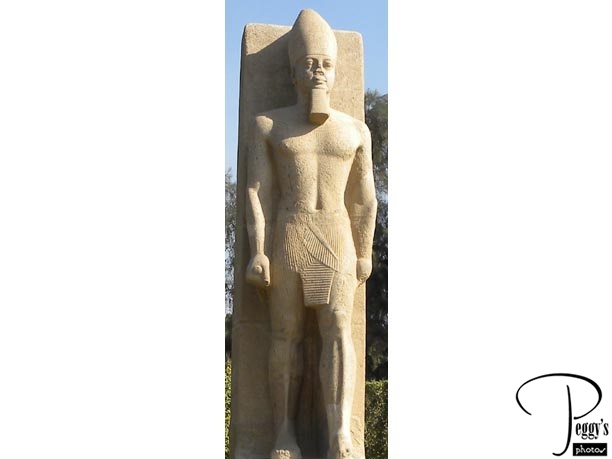
Close–up of the statue.

Statue of Ramses II
Ancient Artifact
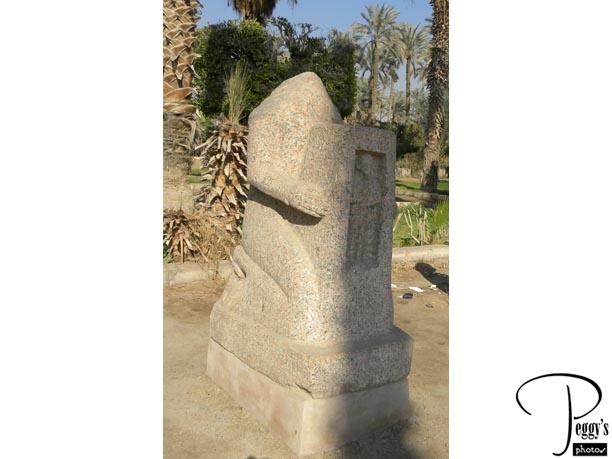
An ancient artifact placed here––it looks like it was a statue of some kind. A place is needed to put all the artifacts that have been and are still being found. Many go to museums; others end up in gardens such as this one.

Ancient Artifact
Ancient Artifact
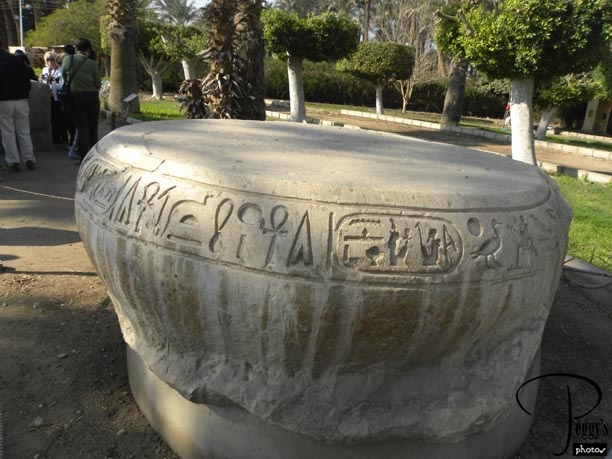
Another ancient artifact with a ring of hieroglyphics around it.

Ancient Artifact
Statue of Ramses II
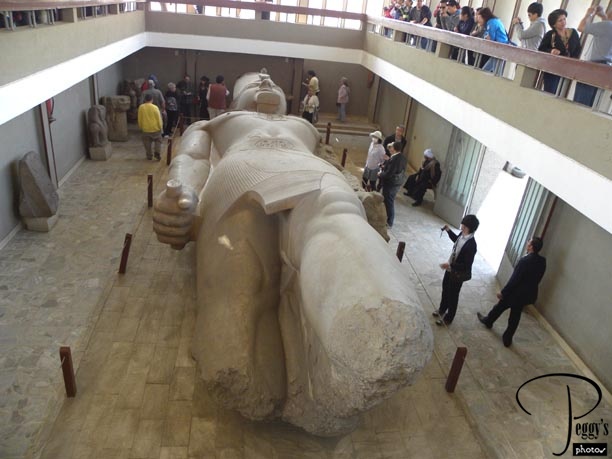
In the museum at Mut Rahina is this colossal limestone statue of Ramses II.

Statue of Ramses II
Statue of Ramses II
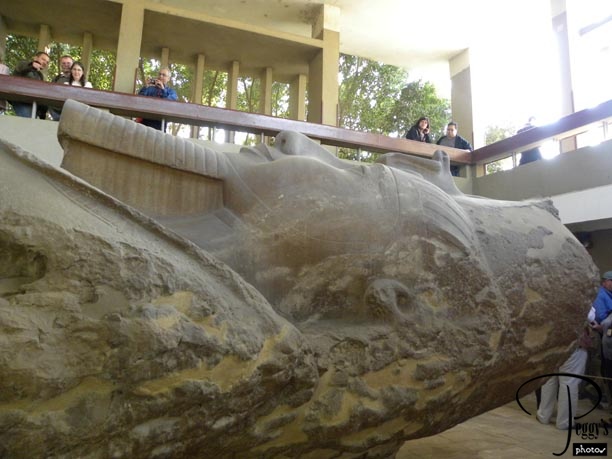
Head of the statue of Ramses II.

Statue of Ramses II
Back on the Road Going to Sakkara
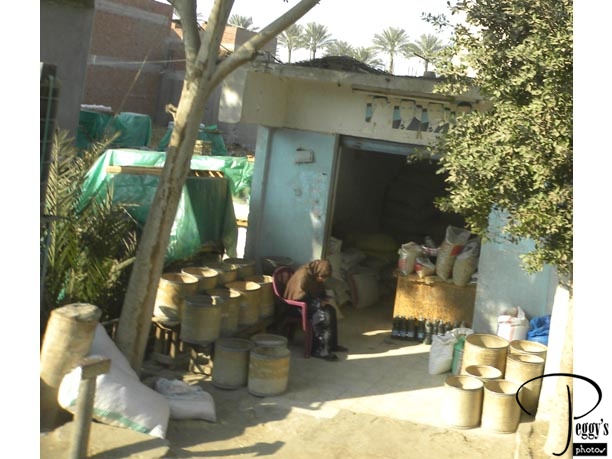
A grain store.

Back on the Road Going to Sakkara
Back on the Road Going to Sakkara
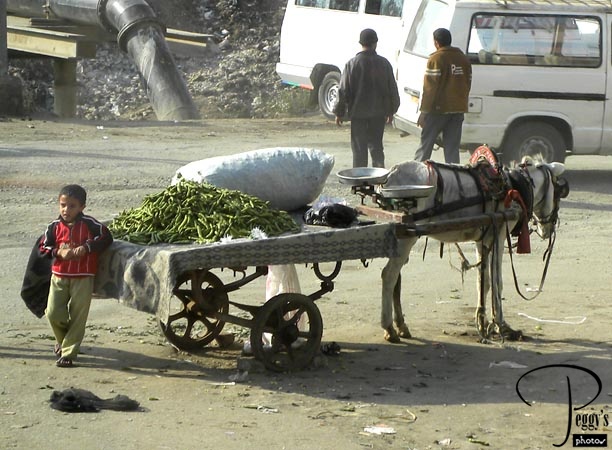
A very young vendor? No, just waiting patiently for his father.

Back on the Road Going to Sakkara
Back on the Road Going to Sakkara
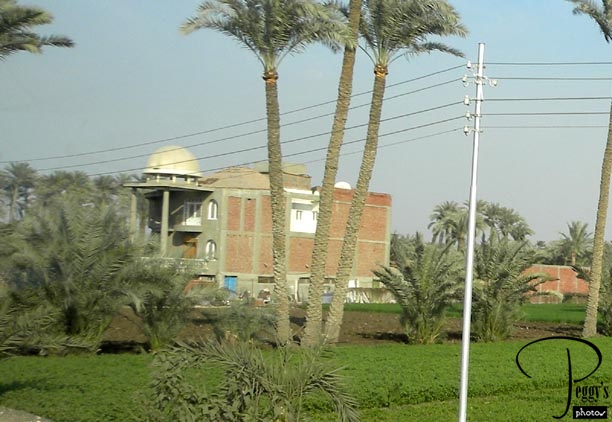
Another very large house in this area.

Back on the Road Going to Sakkara
Back on the Road Going to Sakkara
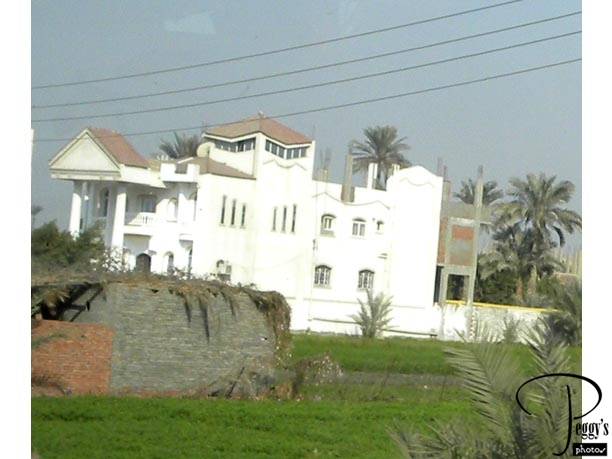
And another very large house.

Back on the Road Going to Sakkara
Back on the Road Going to Sakkara
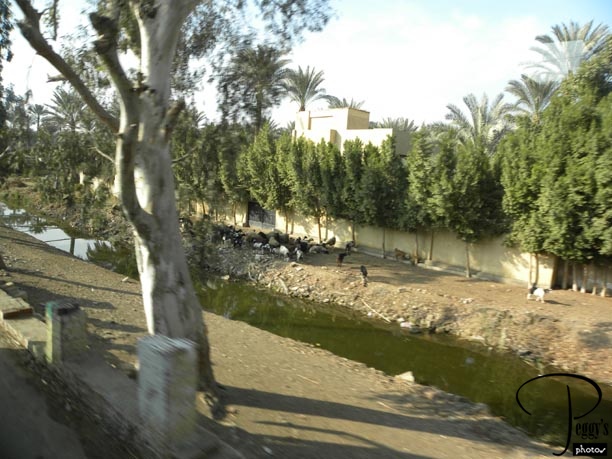
A goat herd off the side of the road.

Back on the Road Going to Sakkara
Back on the Road Going to Sakkara
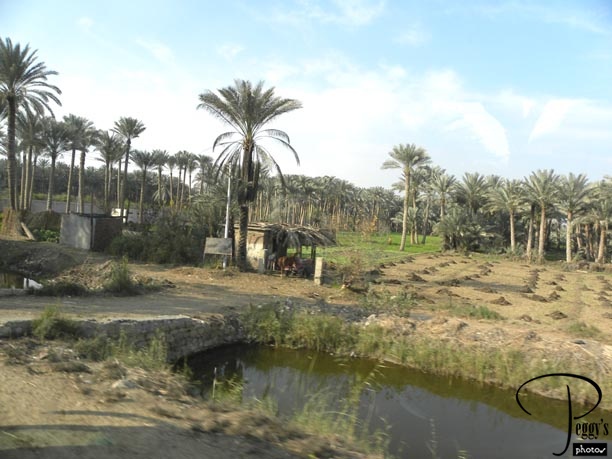
Fields being fed by the Nile.

Back on the Road Going to Sakkara
Back on the Road Going to Sakkara
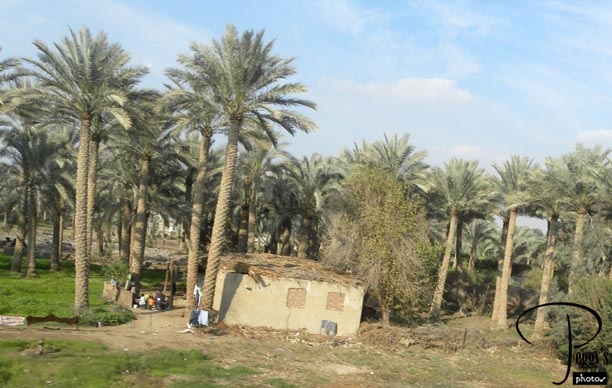
A house in a palm grove.

Back on the Road Going to Sakkara
Sakkara
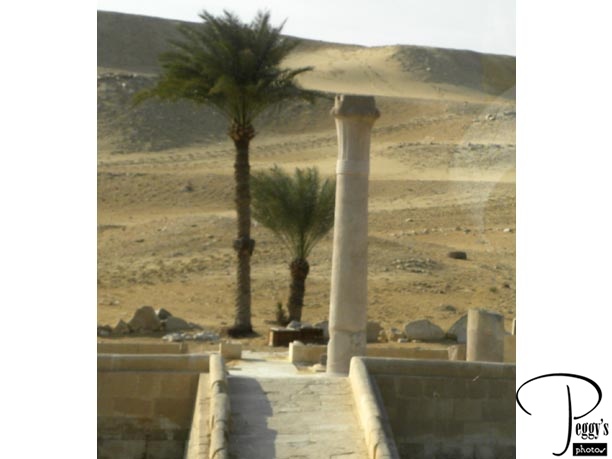
Sakkara (also spelt Saqqara) was the royal necropolis (burial ground) for the Old Kingdom capital of Memphis. It was abandoned and for centuries it was covered over by sand. I forget what Amro told us about this column and other structures here, but I believe these are the ruins of an ancient temple of Sakkara.

Sakkara
Sakkara
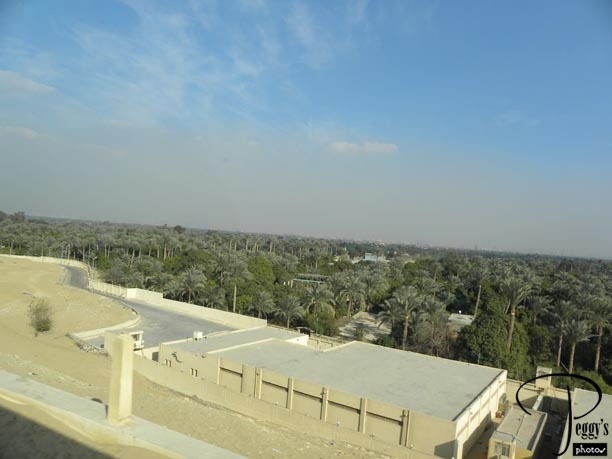
The ancient Egyptian capital of Memphis, now covered by palm groves and fields. I think that is Cairo seen in the far background.

Sakkara
Sakkara
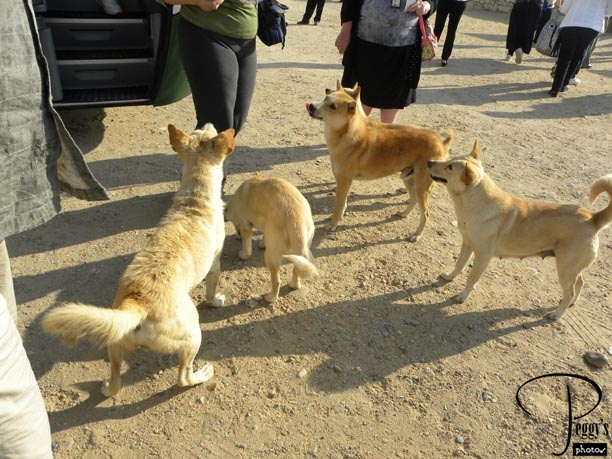
A family of dogs greeted us, hoping for what was left of our lunches bought at On the Road. They were not disappointed.

Sakkara
Sakkara
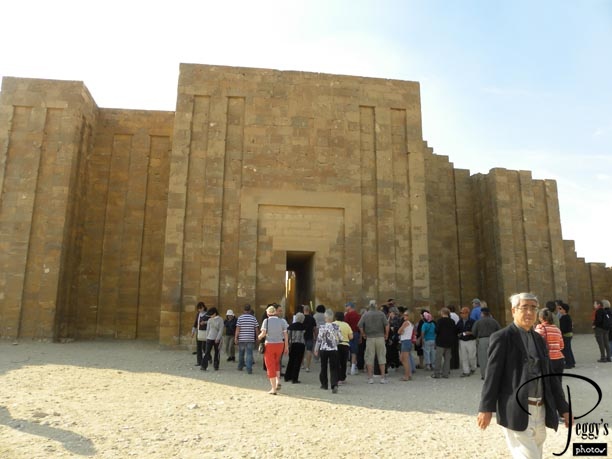
Part of the ancient wall here has been restored. It is the entrance to the complex that included an open court, tombs, shrines, chapels, and pyramids.

Sakkara
Sakkara
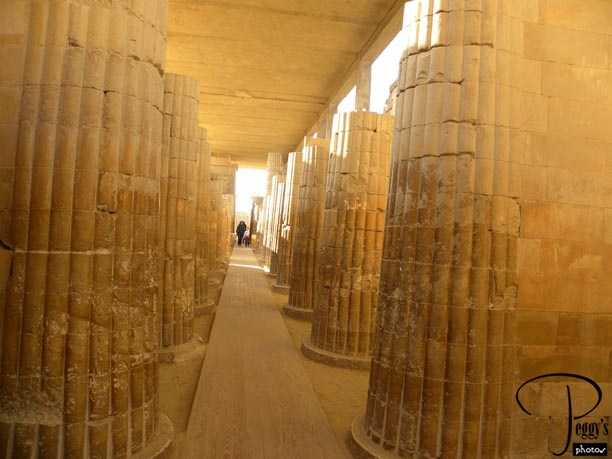
We walked through this pathway of 40 palm–stemmed pillars.

Sakkara
Sakkara–The Step Pyramid of Djoser
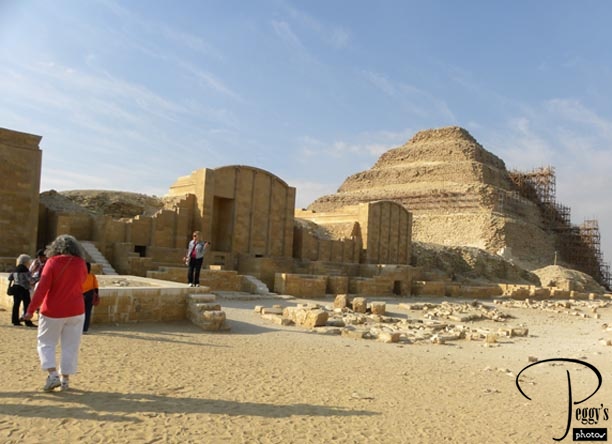
On the left: more of the ancient wall; on the right, the Step Pyramid of Djoser.

Sakkara–The Step Pyramid of Djoser
Sakkara
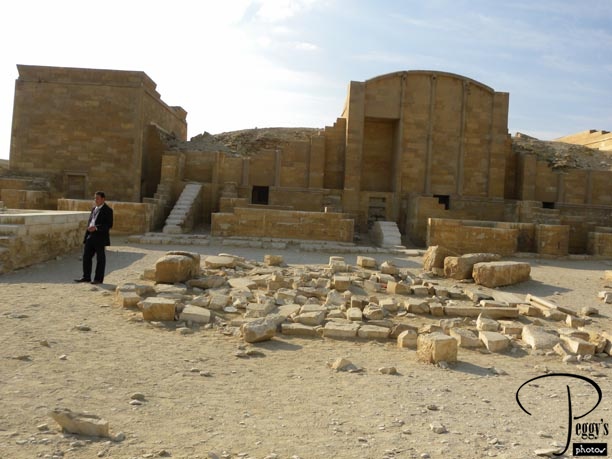
More of the ancient wall and stones found here.

Sakkara
Sakkara
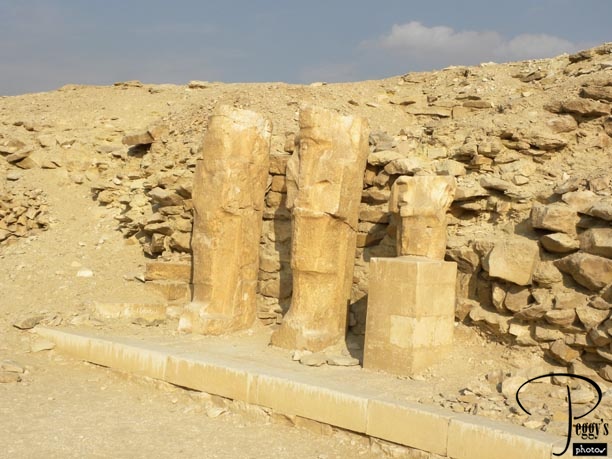
More ancient artifacts found here.

Sakkara
The Step Pyramid of Djoser
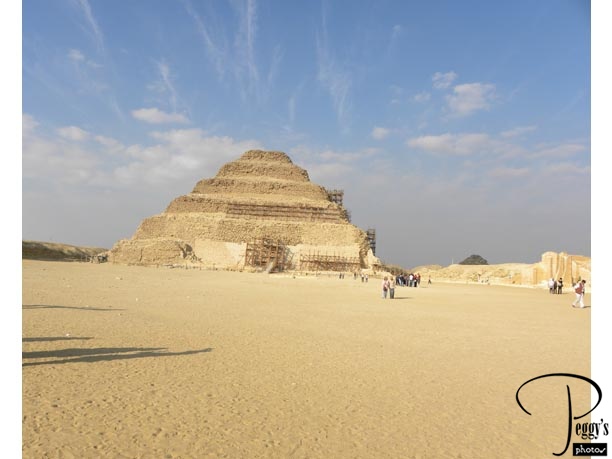
This pyramid, the oldest of Egypt’s 97 pyramids, was built for the Third Dynasty King Djoser (2667–2648) by his architect, the high priest Imhotep. This pyramid was the prototype of all the other pyramids built in Egypt, including the Great Pyramid of Giza. Before this, royal tombs were underground, built with mud bricks, and looked similar to one of the layers in this pyramid. They were called mastabas. Actually, this step pyramid is six mastabas, one on top of another, but it was built of stone rather than mud bricks.

The Step Pyramid of Djoser
The Step Pyramid of Djoser
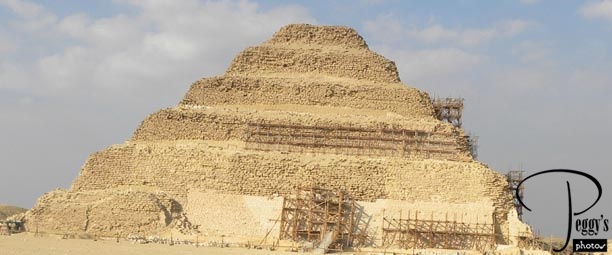
Close–up of the Step Pyramid of Djoser.

The Step Pyramid of Djoser
The Step Pyramid of Djoser
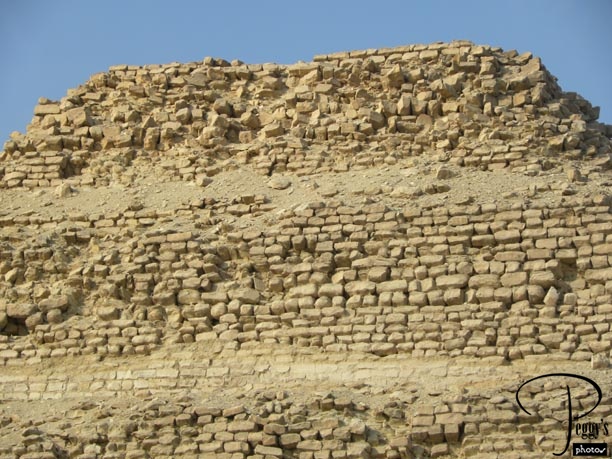
Even closer–up.

The Step Pyramid of Djoser
The Step Pyramid of Djoser
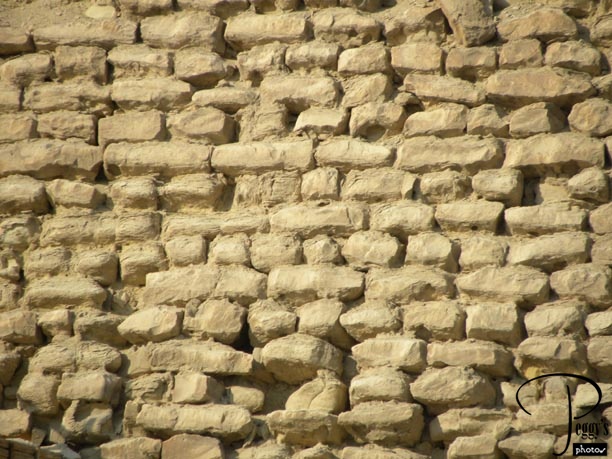
And even more closer–up.

The Step Pyramid of Djoser
Sakkara
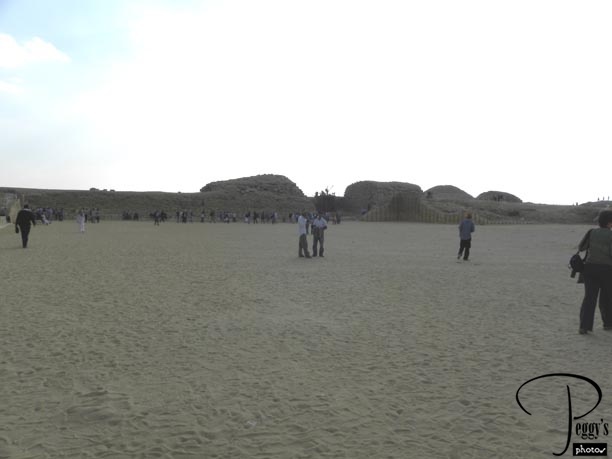
Looking backward into the huge courtyard. I left my tour group here as they were going to walk all the way to the back of the courtyard and then climb steps to see the cobra frieze. My body said, “No more walking and definitely no more climbing any stairs. You are sightseed out for the day.”

Sakkara
The Cobra Frieze
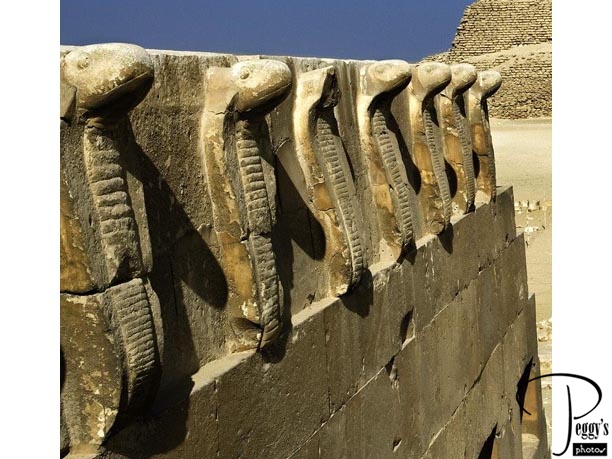
I took this noncopywrited photo from the Internet of what I missed: the cobra frieze. Of course, now I am sorry that I didn’t go to see it, no matter how tired I was.

The Cobra Frieze
Sakkara
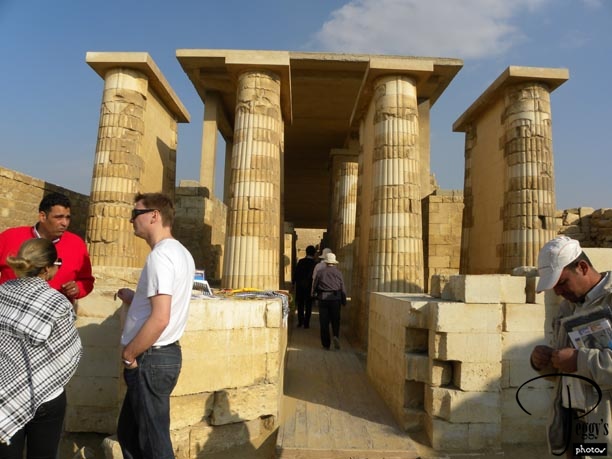
I found the back entrance for the columns.

Sakkara
Sakkara
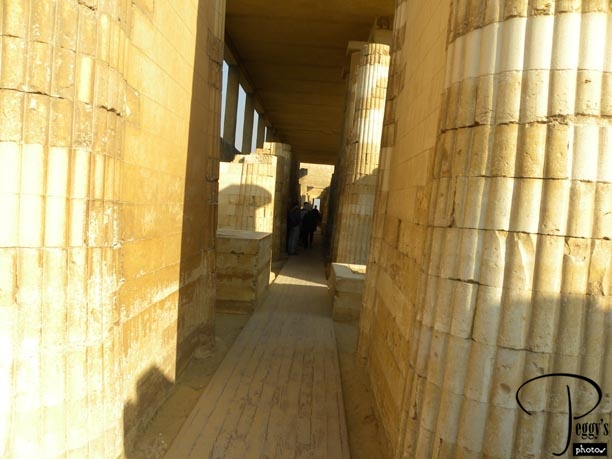
As soon as I started walking through the columns, several tour bus groups came through from the other direction, with any sympathy for a lone tourist walking against them. I finally resolved to push my way through the crowd and did.

Sakkara
Sakkara
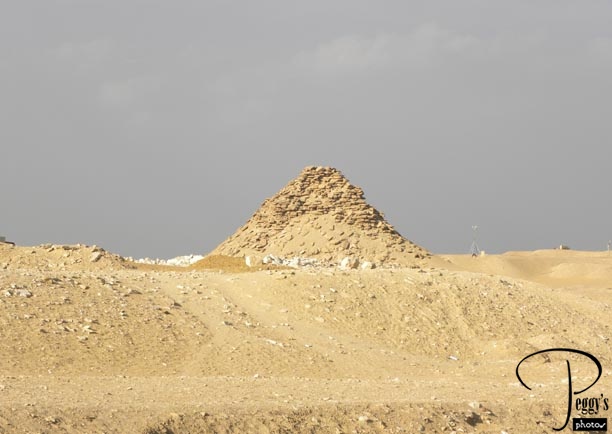
Another pyramid in this complex.

Sakkara
Heading Back to Cairo

Another very large home.

Heading Back to Cairo
Carpet School
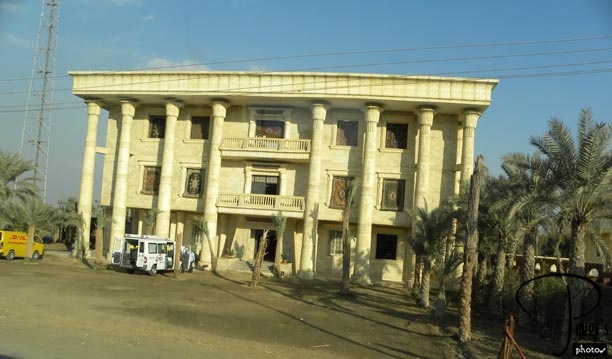
We passed a number of carpet schools in this area. Amro told us that there are 1 million homeless children in Egypt. The carpet schools offer a home to some of them.

Carpet School
Egyptian Countryside
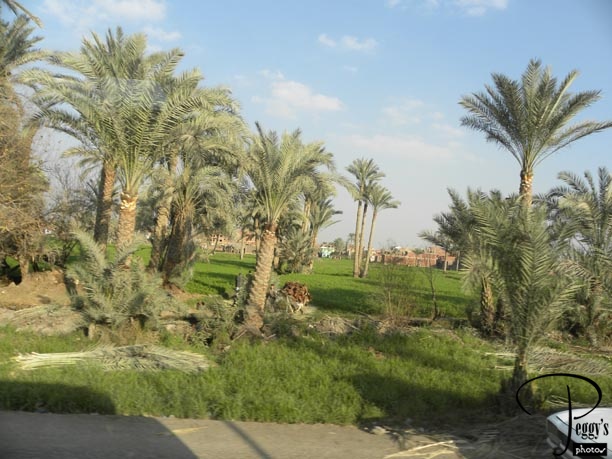
More lush fields.

Egyptian Countryside
Egyptian Countryside
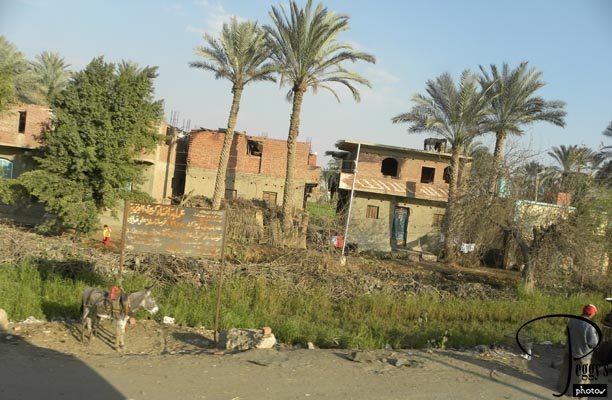
A donkey on the side of the road.

Egyptian Countryside
Egyptian Countryside
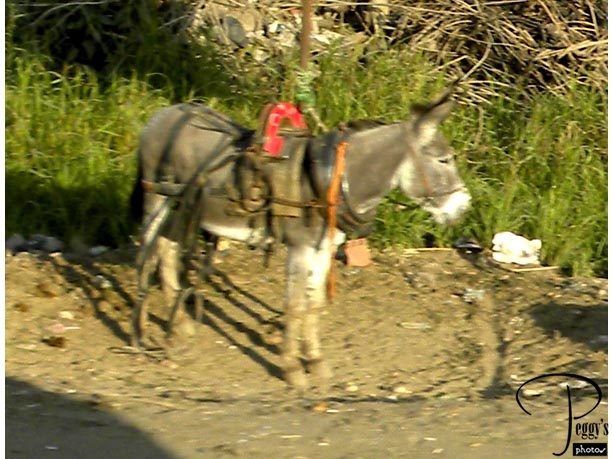
The donkey.

Egyptian Countryside
Egyptian Countryside
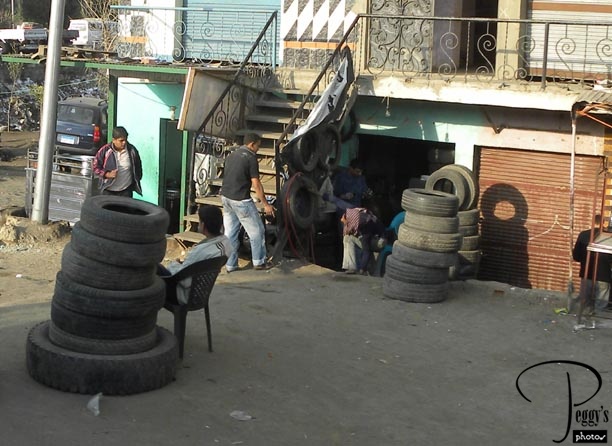
A tire store.

Egyptian Countryside
Coming into Cairo
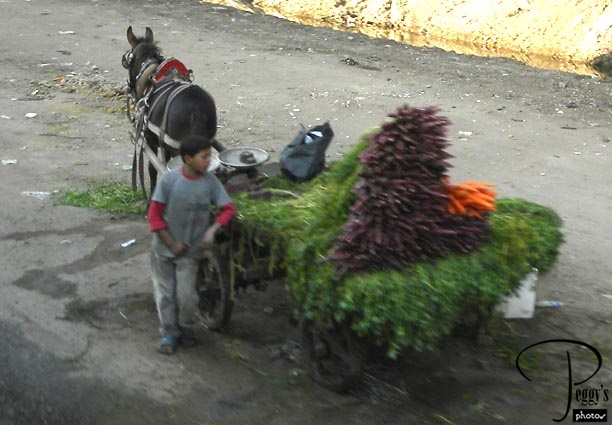
A young vendor at the side of the road.

Coming into Cairo
In Cairo
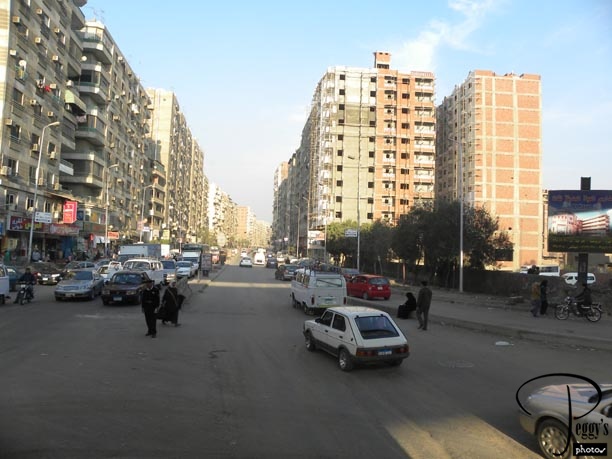
Back to the city.

In Cairo
In Cairo
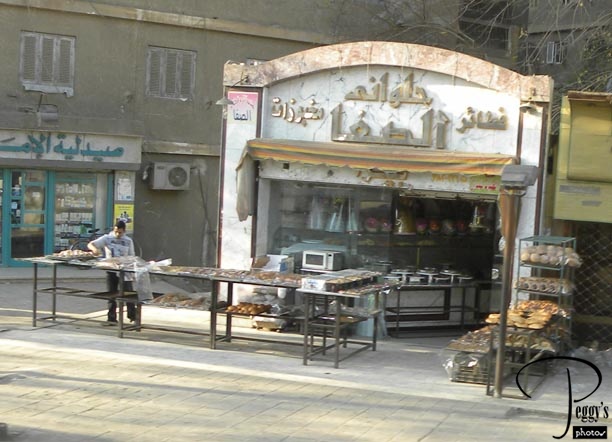
A sidewalk bakery.

In Cairo
In Cairo
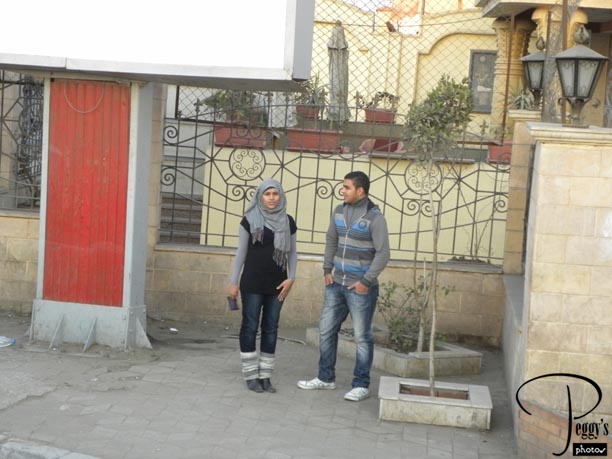
Amro said that there is no cultural prohibition about men and women (here a young woman and a young man) from being seen public together (as there is in Morocco). We were on our way to a nearby Egyptian cotton store. I was hoping that it carried Egyptian cotton sheets, but it was only a clothing store, with many embroidered blouses and dresses. I didn’t buy anything.

In Cairo
Back at Our Hotel/Cairo Protests
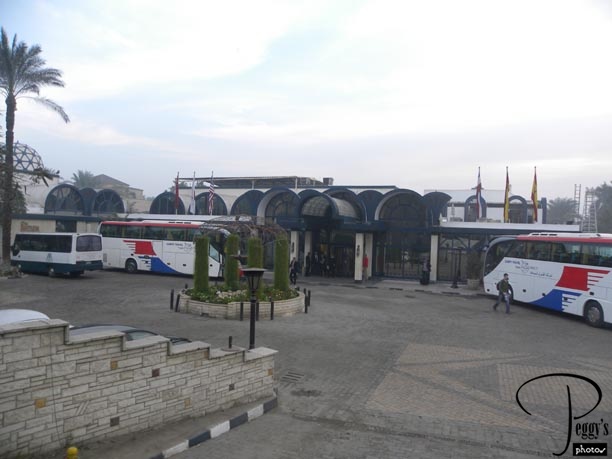
We are back at the Oasis Hotel. By now, we have heard that the protest in Cairo had been a very big one and also that there were protests in a number of other Egyptian cities, including Alexandria where some of us would go to tomorrow. Amro said that the protests had made it to CNN and he requested that everyone contact their families at home that we were all okay. I sent my second “Don’t worry” e–mail to my family. I wasn’t worried because I looked at the protests as a Los Angeleno would: We have had many protests in Los Angeles, some of them becoming violent. You just stayed away from the area they were being held, as we were doing in Cairo. I asked Amro if any previous protests had resulted in looting and he said no––okay, then the protests were not as bad as was our last Los Angeles riot where few places were safe to be in the city during it. I did, however, have concern about two things: one that a call was out to block the roads and the other was that there was a call for a national strike, both which could result in my not being able to get to the airport the day after tomorrow. Neither happened, but if they had, I thought I would have just lied out at the hotel’s pool and read a book until I could leave Egypt. Amro also requested that none of us leave the hotel that evening, but some brave souls did.
I must have really been tired, as I decided to take a short nap and then have dinner and say goodbye to my tourmates who were leaving Egypt tomorrow (the ones on the tour that didn’t include Alexandria), but I slept for 8 hours and didn’t get up to 12 a.m. I got prepared for our trip to Alexandria starting at 6:30 a.m. tomorrow and then went back to sleep.
